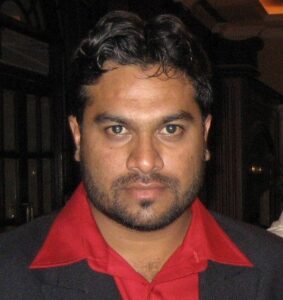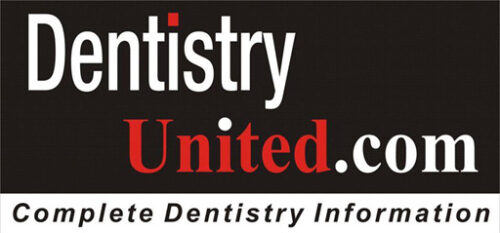A Call, A Back Sprain, and a Return to the Blog
It was early evening when the phone rang on my desk, just as the Mysore sky was melting into copper and gold. I leaned back—carefully—and answered.
On the line was Dr. Catherine Osmanova, an early subscriber of DentistryUnited, a Moscow-based clinician who has followed my blogs since the earliest days, when the posts were fewer but the enthusiasm boundless.
“Dr. Nabeel,” she said warmly, yet with unmistakable reprimand,
“It has been weeks. Where is the next blog? All of us are waiting.”
I smiled. My lower back, however, reminded me not to smile too enthusiastically.
A week earlier, I had attempted a Turkish get-up—a fitness movement that promised strength and elegance. Instead, it gifted me a sharp lumbar spasm that made even holding a mouth mirror feel like lifting artillery.
“It seems,” I replied with a laugh,
“that while enamel cannot regenerate, backs fortunately can—especially with a very skilled physiotherapist.”
Daily physiotherapy—ultrasound sessions, targeted mobilization, and carefully guided exercises—worked their magic. As mobility returned, so did the words waiting to be written.
Dr. Catherine chuckled.
“Good. Now write. Give us something worthwhile and exciting again.”
That was all the spark I needed.
I sat forward and began:
“Let me tell you a story—not from Mysore this time, but from the laboratories pushing the limits of dental science. A story where enamel, once believed impossible to regenerate, may be reborn.”
The Enamel Enigma — Nature’s Strongest Yet Most Vulnerable Armour
Tooth enamel is one of nature’s greatest structural masterpieces:
- An intricate hierarchical arrangement of nano-apatite crystals
- Aligned with near-geometric precision
- Harder than bone
- Resistant to decades of mechanical stress
But it carries one tragic biological limitation:
It does not regenerate.
Once ameloblasts complete their task in early development, they disappear forever. There are:
- no stem cells
- no vascular network
- no biological scaffolding for repair
So when acids, erosion, attrition, or bacteria damage enamel, the body cannot rebuild it.
For generations, dentistry has managed the consequences:
- composites
- GICs
- inlays
- veneers
- onlays
- full crowns
But none recreate the ordered crystalline architecture of enamel. They serve, yes—but they age, fracture, leak, discolor, or fail. The dream has always remained:
Can we guide enamel to grow again—naturally, seamlessly, structurally?
Recently, the scientific world moved closer than ever to that answer.
The Breakthrough — A Biomimetic Matrix That Instructs Enamel to Regrow
In a landmark Nature Communications article (2025), a team led by Prof. Álvaro Mata of the University of Nottingham unveiled a remarkable technology:
A self-assembling elastin-like recombinamer (ELR) protein matrix capable of guiding enamel crystals to regrow in perfect orientation with natural structure.
How It Works
- A Tunable Recombinant Scaffold
ELRs mimic the organic matrix ameloblasts use during enamel formation and can be customized based on the extent of enamel damage. - Application to Damaged Enamel Surfaces
When applied, the matrix forms an ultra-thin, stable layer that adheres intimately to the tooth. - Mineral Exposure and Epitaxial Crystal Growth
With calcium and phosphate available, the matrix directs epitaxial regrowth—not random mineral deposition, but the continuation of enamel prisms themselves.
What Researchers Observed
- 80–90% restoration of natural enamel hardness and modulus
- Fracture resistance approaching natural values
- Seamless integration with the existing tooth surface
- A protective barrier preventing further micro-damage
This is not patchwork dentistry.
This is biologically intelligent regeneration.
From Lab to Clinic — The Future of Enamel Restoration
If upcoming trials—animal studies, human cohorts, long-term data—succeed, dentistry could undergo a generational shift.
Potential transformations include:
- Preventive strengthening
For high-risk individuals: acidic diets, bruxism, GERD, post-orthodontic wear. - Non-invasive caries management
No drilling. No anesthesia. Chairside or possibly at-home application. - Greater accessibility
Particularly powerful for regions where advanced restorative dentistry is unaffordable or unavailable. - A philosophical evolution
Moving from replacing teeth
to biologically rebuilding teeth.
However, critical questions remain:
- Will regenerated enamel last decades under salivary enzymes, biofilm, and mastication?
- How will this technology translate chairside?
- Can it be cost-effective globally?
Those answers will arrive with time—but the direction is clear:
Dentistry is stepping into a regenerative era where engineering and biology work together, not against each other.
Back at My Desk in Mysore
When I finished explaining this to Dr. Catherine, there was silence on the line.
Then she finally said:
“So even teeth may get a second chance?”
“Yes,” I answered, smiling at the irony.
“And that is exactly what the science is pointing toward.”
Outside my window, the last whisper of daylight faded over Mysore’s rooftops.
A physiotherapist had restored my back.
Writing had restored my rhythm.
And soon—perhaps—
science will restore smiles in ways once thought impossible.
What do you think?
- A revolution waiting to unfold?
- A research breakthrough needing real-world testing?
- Or the dawn of dentistry’s regenerative century?
Either way, more blogs are coming—
and this time, no Turkish get-ups will delay them.
Suggested reading :
Primary Source (Peer-Reviewed Paper)
- Title: Biomimetic supramolecular protein matrix restores structure and properties of human dental enamel
- Authors: Abshar Hasan et al.
- Journal: Nature Communications (Volume 16, Article number: 64982)
- DOI: 10.1038/s41467-025-64982-y
- Link: https://www.nature.com/articles/s41467-025-64982-yOpen access; includes detailed methods, SEM images of before/after regrowth, and mechanical testing results.

Dr. Syed Nabeel, BDS, D.Orth, MFD RCS (Ireland), MFDS RCPS (Glasgow) MFDS RCS(Edin) , is a clinician-scholar whose career spans over two decades at the intersection of orthodontics, neuromuscular dentistry, and digitally integrated diagnostics. As Clinical Director of Smile Maker Clinics Pvt. Ltd., he has pioneered a philosophy of care rooted in anatomical precision, occlusal neurophysiology, and contemporary AI-enhanced workflows. A Diplomate in Orthodontics from Italy and an alumnus of advanced programs at Various International Universiteis , Dr. Nabeel brings a globally benchmarked clinical acumen to the nuanced management of temporomandibular disorders, esthetic rehabilitation, and algorithm-guided orthodontics.
In 2004, he founded DentistryUnited.com, a visionary platform connecting over 40,000 dental professionals through peer learning and collaborative dialogue. His academic drive led to the launch of Dental Follicle – The E-Journal of Dentistry (ISSN 2230-9489), a peer-reviewed initiative now indexed in EBSCO, fostering interdisciplinary scholarship across clinical domains.
A prolific educator, he has contributed to UGC and national broadcast media as a subject expert and regularly speaks at scientific forums, favoring small-group, discussion-based formats that emphasize clinical realism over theoretical abstraction. His ethos remains steadfast: knowledge, when shared freely, multiplies in value. Dr. Nabeel continues to shape the future of dentistry through research, mentorship, and his enduring commitment to elevating practice standards in India and beyond.
Suggested reading :
Primary Source (Peer-Reviewed Paper)
- Title: Biomimetic supramolecular protein matrix restores structure and properties of human dental enamel
- Authors: Abshar Hasan et al.
- Journal: Nature Communications (Volume 16, Article number: 64982)
- DOI: 10.1038/s41467-025-64982-y
- Link: https://www.nature.com/articles/s41467-025-64982-yOpen access; includes detailed methods, SEM images of before/after regrowth, and mechanical testing results.

